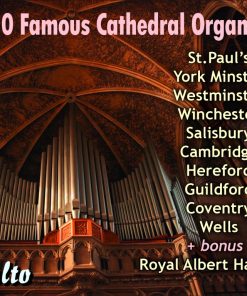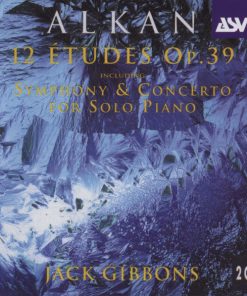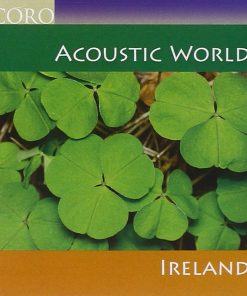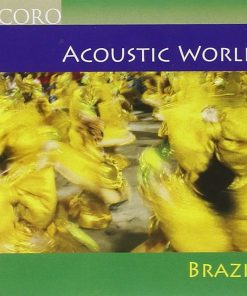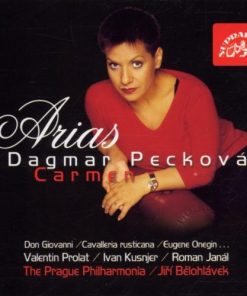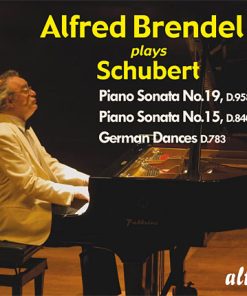HAYDN, M: Requiem “Pro Defuncto Archiepiscopo Sigismundo” – The King’s Consort Hyperion
$ 19,99 $ 11,99

Requiem in C minor ‘Pro defuncto archiepiscopo Sigismundo’ MH154[40’06]
CD1
1
Movement 1: Introitus: Requiem aeternam – Kyrie eleison[7’04]
2
Movement 2: Sequenz: Dies irae[8’35]
3
Movement 3: Offertorium: Domine Jesu Christe[4’02]
4
Movement 4: Versus: Hostias et preces tibi[3’08]
5
Movement 5a: Sanctus et Benedictus. Sanctus[2’53]
6
Movement 5b: Sanctus et Benedictus. Benedictus[3’38]
7
Movement 6a: Agnus Dei et Communio. Agnus Dei – Lux aeterna[4’23]
8
Movement 6b: Agnus Dei et Communio. Cum sanctis tuis[2’22]
9
Movement 7: Requiem aeternam: Requiem aeternam – Cum sanctis tuis[4’01]
Missa in honorem Sanctae Ursulae ‘Chiemsee-Messe'[43’33]
CD2
10
Movement 1: Kyrie[3’39]
11
Movement 2: Gloria[8’47]
12
Movement 3 Part 1: Credo. Credo in unum Deum[2’18]
13
Movement 3 Part 2: Credo. Et incarnatus est[4’25]
14
Movement 3 Part 3: Credo. Et resurrexit tertia die[6’35]
15
Movement 4: Sanctus[2’16]
16
Movement 5: Benedictus[6’56]
17
Movement 6 Part 1: Agnus Dei. Agnus Dei[4’48]
18
Movement 6 Part 2: Agnus Dei. Dona nobis pacem[3’49]

The King’s Consort’s latest foray into the studio brings us a thrilling new recording of Michael Haydn’s Requiem, and reveals the little-known ‘St Ursula’ Mass to be a truly exceptional work.
The Requiem was composed in response to tragedy, the death of Haydn’s patron—the Prince-Archbishop of Salzburg—providing the official cloak for an outpouring of grief as much inspired by the death of the composer’s infant daughter. In itself the work is a memorable and confident example of the genre, but its deserved fame has been somewhat eclipsed by the many striking similarities between the Haydn and Mozart Requiems; when Wolfgang Amadeus composed what was to be his last—and most famous—work a full twenty years after Haydn’s memorial to the archbishop had been first performed, he doubtless intended it as the highest of praise to his friend that he borrowed melodies, rhythms, scoring, structure … Such points of musicological interest must no longer be allowed to obscure the worth of the Haydn’s original magnum opus.
Some three dozen Mass-settings by Michael Haydn survive. The Missa in honorem Sanctae Ursula (also known as the ‘Chiemsee-Messe’) currently rests in relative obscurity, being performed rarely and hardly touched in the recording studio. And yet Robert King, his choir, soloists and orchestra here demonstrate this to be a work of great beauty and intense power, with a place both in the liturgy and as a showcase for excellent performances.
Fast Shipping and Professional Packing
Due to our longstanding partnership with UPS FedEx DHL and other leading international carriers, we are able to provide a range of shipping options. Our warehouse staff are highly trained to pack your goods exactly according to the specifications that we supply. Your goods will undergo a thorough examination and will be safely packaged prior to being sent out. Everyday we deliver hundreds of packages to our customers from all over the world. This is an indication of our dedication to being the largest online retailer worldwide. Warehouses and distribution centers can be located in Europe as well as the USA.
Orders with more than 1 item are assigned processing periods for each item.
Before shipment, all ordered products will be thoroughly inspected. Today, most orders will be shipped within 48 hours. The estimated delivery time is between 3-7 days.
Returns
The stock is constantly changing. It's not entirely managed by us since we are involved with multiple parties such as the factory and our storage. The actual stock can fluctuate at any time. Please understand it may happen that your order will be out of stock when the order is placed.
Our policy is valid for 30 days. If you haven't received your product within 30 days, we're not able to issue either a return or exchange.
You are able to return a product if it is unused and in the same condition when you received it. It must also still remain in the original packaging.
Related products
MUSIC CD
MUSIC CD
MUSIC CD
MUSIC CD



